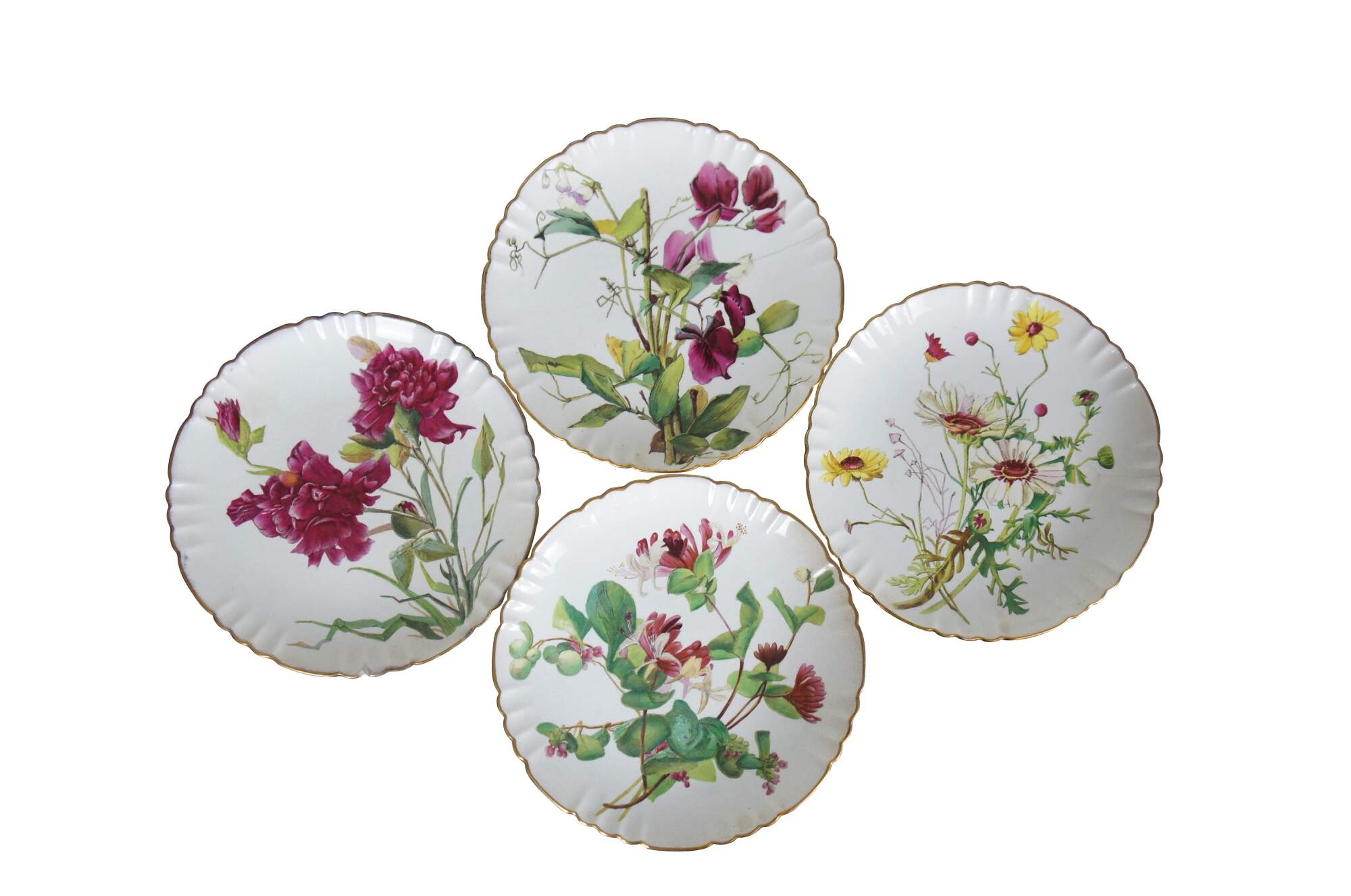
Shipping:
Free Shipping Included
Delivery:
Estimated 2-15 Business Days
Payments:
Credit Card, Check, Cash, PayPal, Apple Pay, Venmo
Returns:
30 Days 100% Money Back Guarantee, Buyer Pays Return Shipping
Description
Set of 4 Mintons for Bailey, Banks & Biddle porcelain dinner plates with lightly scalloped and gilded edges, featuring a botanical motif of four different flowers. Numbered C3178. Mark used circa 1873-1891.
"The firm began in 1793 when Thomas Minton (1765–1836) founded his pottery factory in Stoke-upon-Trent, Staffordshire, England producing earthenware, the company trading under the name Thomas Minton by 1796 and forming a partnership with Joseph Poulson who made bone china in his near-by china pottery. The company name shifted several times during this partnership, from Minton, Poulson, and Pounall (ca 1800), to Minton Poulson and Co (ca 1801-1802), and Minton and Poulson (ca 1802-1808). When Poulson died in 1808, Minton carried on alone, again as Thomas Minton using Poulson's pottery for china until 1816. Minton's two sons, Thomas and Herbert, were taken into partnership in 1817 (company name Thomas Minton & Sons, ca 1817-1824), but Thomas went in to the church and was ordained in 1825. Herbert had been working in the business since 1808, when he was 16, initially as a travelling salesman. Minton built a new china pottery in 1824 and transitioned the name from Thomas Minton and Son back to Thomas Minton. Early Mintons products were mostly standard domestic tableware in blue transfer-printed or painted earthenware, including the ever-popular Willow pattern. On his death in 1836, Minton was succeeded by his son Herbert Minton (1793–1858), who took John Boyle as a partner to help him the same year, becoming Minton & Boyle until ca 1841. Herbert developed new production techniques and took the business into new fields, notably including decorative encaustic tile making. After a few years as Herbert Minton & Co, Minton entered into partnership with Michael Hollins in 1845 and formed the tile making firm of Minton, Hollins & Company / Minton & Hollins. From ca 1847-1873 the name once again was Herbert Minton and Co. The next twenty-five years saw Mintons develop several new specialities in design and technique, while production of established styles continued unabated. On his death in 1858 Herbert Minton was succeeded by his equally dynamic nephew Colin Minton Campbell who had joined the partnership in 1849. Beginning about 1873 the company name was simplified to simply Mintons. From the mid-1890s onwards, Mintons made major contributions to Art Nouveau ceramics with a fine range of slip-trailed majolica ware. "Secessionist Ware" manufactured from about 1901-1916 was arguably the last boldly innovative move made by Mintons in terms of design. After World War I wares became rather more conventional. The Minton factory in the centre of Stoke was rebuilt and modernised after the Second World War by the then managing director, J. E. Hartill, a great-great-great grandson of Thomas Minton. But the firm shared in the overall decline of the Staffordshire pottery industry in the post-war period. The tableware division was always the mainstay of Minton's fortunes and the post-1950 rationalisation of the British pottery industry took Mintons into a merger with Royal Doulton Tableware Ltd. By the 1980s Mintons was only producing a few different shapes but still employed highly skilled decorators at their closing." (Source: Wikipedia / Potteries Auctions)
Condition
Good Overall - Couple of cracks; some crazing/discoloration
Dimensions
8.5" x 1" (Diameter x Height)